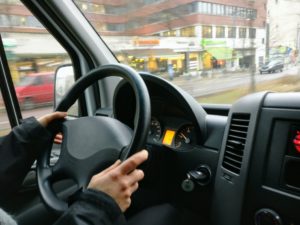Get A Free Consultation
(832) 449-8230Car accidents can leave you feeling traumatized and confused, regardless of the amount of damage caused. Understanding how and why the accident occurred can be challenging, but with the assistance of the proper authorities such as police officers, lawyers, and collision experts, you can find closure. In the event of an auto accident, law enforcement officers are typically the first individuals to be notified. Their arrival at the scene marks the beginning of the investigation process.
In the event of a car accident, identifying fault is crucial. It can determine whether your medical expenses are covered or if you must pay out of pocket. However, determining liability often necessitates thorough investigations and expertise. The three primary entities responsible for determining fault are:
After an accident is reported to the police, they can arrive at the scene within minutes or hours of the collision. The officers will interview all witnesses at the scene, including the drivers involved, and gather all possible information to draft their final crash report. This report is filed by the officer with the police department and typically becomes available online within a few days.
Depending on the officer’s professional judgement, the report may indicate who they believe was at fault for the accident. However, this does not necessarily mean that the named person is legally responsible for the accident. The determination of fault can only be made through the court system.
The officer or police department can issue traffic citations to the party found at fault for violating applicable traffic rules. The accused party may need to appear before a traffic court or pay the ticket. Paying the traffic ticket can often be considered evidence of fault.
Accident reconstruction experts have extensive experience analyzing various car accidents. They primarily focus on two factors: property damage and data retrieved from one or more of the vehicles. By examining the property damage, these experts can determine the speed of the vehicle(s) at the time of the collision. By analyzing the crash data, they can identify what the vehicles did immediately before the accident, such as accelerating, braking, or turning left/right.
Based on these data points, the expert can create a report that concludes who is likely at fault for the accident. However, hiring an accident reconstruction expert can be costly, which is why it’s best to seek the guidance of a qualified car accident lawyer to assist you through the process.
When you file a lawsuit in a civil court, the legal system will determine fault by identifying which parties were negligent while driving. Negligence is determined by whether a person failed to exercise reasonable caution under the circumstances of the accident. The judge or jury will make their rulings based on the evidence presented and arguments made by each side. They will determine fault and the extent of the damages caused.
The process of determining fault can be easy or difficult depending on the type of car accident. Here, we will examine the most common types of car accidents:
Rear-end collisions happen when a vehicle crashes into the back of another vehicle. In most cases, these accidents could have been avoided if the driver behind exercised sufficient caution. They often occur due to a lack of attention or distractions while driving. As a result, the police officer may assign fault to the driver behind automatically.
Head-on collisions, also known as frontal crashes, are among the most catastrophic types of car accidents, usually resulting in massive damages. They happen when two vehicles from opposite directions crash into each other from the front ends. According to statistics, head-on collisions often result from careless overtaking and a failure to pay attention. In these crashes, it is possible that both drivers will claim that the other car veered into their lane, creating a “he said/she said” situation, where the officer must rely on independent witness statements or the officer’s own judgment of who is telling the truth to assign fault. Regardless of how the police officer assigns fault, the best way to prove fault is through the use of a collision expert. The expert looks at photos of where the vehicles stopped and what the property damage looks like. They may also analyze the vehicle data uploaded from each car, which explains what each car was doing right before the crash. The expert ultimately determines fault and writes a report, which can be used at trial to prove fault before a judge or jury.
Left turn accidents occur when one car is turning left on a solid green light and the other car is going straight. In most cases, the police officer will assign fault to the driver who was turning left, as it is presumed that the driver failed to yield to the driver going straight. However, the officer’s initial determination may be impacted by additional facts or eyewitness statements.

The sideswipe/lane change case is a classic example of a “he said/she said” situation. The police officer may find it difficult to determine who is at fault, but the testimony of third-party witnesses can be significant. If you have the financial means, a crash data expert can analyze the vehicle data and determine fault. It’s important to keep in mind that police reports and insurance company decisions may not necessarily determine the outcome in court. For this and other reasons, it’s often advisable to seek the services of an experienced car accident attorney.
Lone Star Injury Attorneys, PLLC
 N/a
N/a